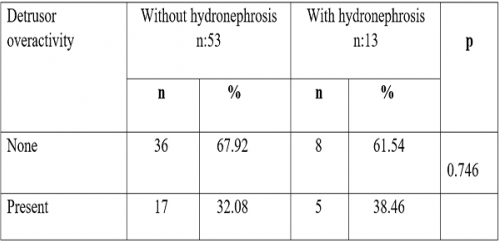Dear editor,
We have read with great interest, the case series and literature
review of false penile fracture by Ozlu et al. in which the authors
share clinical experience with more than 100 patients over a
13-year period []. By examination of operative reports, they
retrospectively evaluated the patients with a pre-diagnosis of penile
fracture and frankly reported a misdiagnosis rate of approximately
8%. This ratio is comparable and consistent with the literature [-]. Examining the patient clinical and operative characteristics,
shown as a table on a separate page, we see that only two of
total eight false penile fracture cases underwent radiological
examination. Magnetic resonance imaging (MRI) was preferred in
these patients, and it was stated that one of them was MRI positive
(patient 4) and the other was MRI false positive (patient 2). Patients
with a tunical tear in preoperative MRI, but no tear in surgical
exploration were considered to have false penile fracture. Since
only ligation procedures were performed on both MRI positive
and MRI false positive patients, we think that such a distinction
is confusing and not necessary. Perhaps ultrasonography could
be preferred for the remaining six patients for whom radiological
examination was not performed, due to its easy accessibility
and provide medical recording. However, an ideal radiographic
imaging modality is still lacking so far []. Although there are
some clinical differences between false and true penile fractures, the two conditions cannot be clearly distinguished from each other
either clinically or radiologically [].
Consequently, we would like to encourage Ozlu et al., on a
very diligently written and quite informative article that briefly
summarizes the studies that have already been published and
the approach to the patient with penile fracture. Urologists
somehow have to base the definitive diagnosis of penile fracture
on surgical exploration in order to eliminate serious long-term
potential problems of an overlooked tunical tear.
Sincerely yours.
Ethics Committee Approval: This article does not contain any
studies with human participants performed by the author.
Authorship Contributions: Any contribution was not made by
any individual not listed as an author. Concept - B.K.A., O.L.O.;
Design - B.K.A., O.L.O.; Supervision - B.K.A., O.L.O.;
Resources - B.K.A., O.L.O.; Materials - B.K.A., O.L.O.; Data
Collection and/or Processing - B.K.A., O.L.O.; Analysis and/
or Interpretation - B.K.A., O.L.O.; Literature Search - B.K.A.,
O.L.O.; Writing - B.K.A., O.L.O.; Critical Review - B.K.A.,
O.L.O.
Conflict of Interest: The author declares that he has no conflict
of interest.
Financial Disclosure: No grants or funding was provided for
this study.

